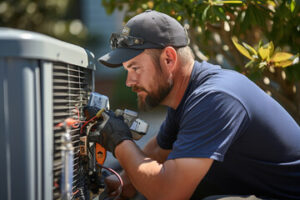Pest Control Social Media is a potent marketing channel for companies. Creating business pages and paying for targeted advertising campaigns are key to driving traffic, leads, and sales.
Customers are contacting businesses on social media to schedule services, request information, and more. An active social media presence allows your pest control company to respond promptly and provide customer service.

Identify Your Target Audience
No service-based business can survive without an online presence. A website with a dedicated contact page and a well-rounded marketing strategy is critical to attracting customers and establishing your brand in the area.
When it comes to identifying your target audience, conducting thorough market research is vital. This helps you understand your potential clients and their specific needs, which can be used to create a targeted digital marketing campaign. For example, if you learn that homeowners in your local area are most interested in pest prevention strategies for the summer months, you can offer a seasonal special on services to help prevent mosquitoes, ticks, and ants from infesting your clients’ homes.
In addition to optimizing your website, creating a social media page is another way to increase your visibility and build brand loyalty. Regularly post content that showcases your services and shares customer testimonials to establish your company as a trusted source of information in the industry. Many customers check online reviews before selecting a service provider, so it’s important to encourage your satisfied clients to leave positive feedback.
Developing an effective marketing strategy can rejuvenate your pest control business and set your revenue growth graph soaring. Incorporate the 14 innovative strategies above to improve your brand recognition, attract new customers, and achieve your business goals.
Create A Business Page
Using digital marketing techniques like search engine optimization and pay-per-click campaigns, pest control businesses can reach a wider audience with relevant content, showcase their expertise, and establish themselves as industry leaders. This allows them to build trust and foster brand loyalty with new and existing customers alike.
When promoting their services online, pest control companies should keep in mind the unique needs of their target audience. They should focus on providing informative content about the most common local pests and their behavior, prevention tips, and best practices for controlling them. They can also create blogs or videos to highlight a day in the life of their business, giving potential customers a glimpse into how they operate and what their customer service is all about.
Showing a friendly face and humanizing their business is a great way for pest control businesses to increase their visibility on social media. Posting photos of employees at work or on-the-job selfies helps to make their business more relatable and builds trust with potential customers. These images must be paired with a short description of the company’s services to maximize engagement and provide an overview of what the business does.
Aside from building a strong presence on social media, pest control businesses should regularly monitor their website traffic and the performance of their paid ads to ensure they’re keeping up with current marketing trends. They should also stay up-to-date on their licensing and certification requirements, as most states have specific regulations that they must abide by.
Post Relevant Content
It’s crucial to engage with your audience on social media. Posting content that answers common pest control questions – and does so in an educational way – builds credibility for your business and keeps you top of mind with local customers. For example, you could post a how-to video showing how to identify different pests or share tips on DIY pest control techniques.
Showcase the people behind your pest control company by posting team photos, including on-the-job selfies. This personal approach builds trust with local customers and shows that your team is experienced, knowledgeable, and friendly. Share photos of your work, too, especially any positive online reviews from satisfied clients.
Hashtags are another way to increase your online reach and visibility. Use relevant industry hashtags and local city-specific hashtags to help your audience find you. For example, a local pest control business in the city of Chicago may use the hashtag #(YourCity)(YourPestControlBusinessName).
It’s critical to be available 24/7 for prospects and existing customers. A quick turnaround on social media DMs demonstrates your commitment to customer service and is one of the best ways to build loyalty and referrals. You can automate your DM responses with chatbots to automatically respond when you’re not in the office, ensuring your messages are always professional and on-brand. These bots also feature relevant, customizable auto-replies that include Calls to Action like scheduling a service, requesting an estimate, or completing an online form.
Engage With Your Audience
Social media is a powerful marketing tool that allows your business to showcase your services and uniquely engage with your audience. Posting how-to videos on YouTube and pictures of your team members on Instagram gives your potential customers a more in-depth view of your company, helping them build trust with your brand.
In addition, creating a blog that shares relevant pest control industry information can help your business gain credibility and attract new clients. By using keywords and phrases in your posts that relate to your service area, your content will be more likely to appear on search results pages. Use relevant hashtags to further expand your possible reach and make sure your team responds to comments and messages quickly.
Sharing customer testimonials on your social media channels also helps to boost your brand reputation. Whether in a photo, comment, or video montage, these real-life stories of how your services helped improve their pest problems provide an external endorsement for your business and can increase your chances of new clients calling in for a quote.
By implementing an effective pest control social media strategy and using email marketing to maintain contact with past, current, and prospective customers, you can drive more leads, build relationships, and boost your bottom line. If you are ready to take your business to the next level, schedule a free demo today. Our all-in-one tools simplify your operations with online booking, streamlined communication, and automated review requests.
Promote Your Referral And Loyalty Programs
Once you’ve established a presence on the main social media platforms, you need to promote your referral and loyalty programs to attract new clients. This can be done by encouraging people to follow your business and mentioning the rewards available for those who do. People are much more likely to believe recommendations from other people than they are from a brand.
Posting testimonials on your Facebook and Instagram pages can be a great way to get this across. Ask previous customers to give a short video or written review of their experience with your pest control services. This can help build trust in your brand, resulting in more leads and long-term success for your company.
Using trending hashtags is also a good way to spread the word about your referral and loyalty program. Make sure to use relevant and appropriate hashtags, as this will boost your reach. You can also include call-to-actions within your posts that direct people to visit your website, book a service, or contact you directly for more information.
While automation isn’t the answer for everything, it does allow you to save time and money while still keeping your social media profiles active. By automating tasks such as post-scheduling, comment monitoring, and customer relationship management, you can spend less time on administration and more time forming human connections with your audience. If you’re not comfortable managing your social media in-house, consider hiring a social media manager or a marketing agency with experience working in the pest control industry.
Share Customer Testimonials
When it comes to social media marketing, sharing customer testimonials is a great way to show potential customers that you’re a credible and trustworthy business. Testimonial posts featuring before-and-after photos, video clips of your pest control services in action, or even a montage of client testimonials are all effective ways to increase engagement and demonstrate the value of your business.
Another way to build trust and credibility is by offering exclusive deals to your audience. This can include free home inspections or quotes, discounted pest control services, or discounts on seasonal merchandise. These promotions are a great way to attract new and returning clients while also building loyalty with existing ones.
Lastly, don’t forget to include your social media handles in all of your marketing materials. This includes your website, blog, and email newsletters. Also, consider including them in your printed promotional materials like flyers, door hangers, business cards, and client referral programs.
With a well-planned and targeted social media strategy, pest control companies can boost their online presence, reach more potential customers, and drive growth for their businesses. Using a CRM solution like GorillaDesk, with online booking, streamlined communication, and automated review requests makes it easy for pest control companies to engage their audiences on social media while generating more leads and increasing sales. Get started with a free 14-day trial today!
